-
 Bitcoin
Bitcoin $107,443.3008
-1.17% -
 Ethereum
Ethereum $2,494.2503
-0.63% -
 Tether USDt
Tether USDt $1.0003
0.00% -
 XRP
XRP $2.2496
2.23% -
 BNB
BNB $658.7569
0.63% -
 Solana
Solana $154.9826
1.94% -
 USDC
USDC $1.0000
0.01% -
 TRON
TRON $0.2799
1.07% -
 Dogecoin
Dogecoin $0.1659
-1.78% -
 Cardano
Cardano $0.5745
0.25% -
 Hyperliquid
Hyperliquid $39.7005
0.13% -
 Bitcoin Cash
Bitcoin Cash $519.5989
3.78% -
 Sui
Sui $2.7874
-2.40% -
 Chainlink
Chainlink $13.3762
-1.69% -
 UNUS SED LEO
UNUS SED LEO $9.0784
-0.64% -
 Avalanche
Avalanche $17.9846
-2.81% -
 Stellar
Stellar $0.2390
-0.06% -
 Toncoin
Toncoin $2.9028
0.25% -
 Shiba Inu
Shiba Inu $0.0...01147
-2.17% -
 Litecoin
Litecoin $86.6956
-1.27% -
 Hedera
Hedera $0.1508
-0.50% -
 Monero
Monero $322.6222
3.26% -
 Polkadot
Polkadot $3.4124
-2.99% -
 Dai
Dai $0.9999
0.00% -
 Bitget Token
Bitget Token $4.5434
-1.97% -
 Ethena USDe
Ethena USDe $1.0002
0.00% -
 Uniswap
Uniswap $7.1562
-2.61% -
 Aave
Aave $275.8830
-1.02% -
 Pepe
Pepe $0.0...09790
-4.04% -
 Pi
Pi $0.5018
-5.09%
Is it more profitable to hold Stacks(STX) for a long time or trade it in the short term? Which strategy is suitable for novices?
Long-term holding of Stacks (STX) suits novices for its simplicity and lower risk, while short-term trading demands more skill and market understanding.
May 05, 2025 at 02:00 am
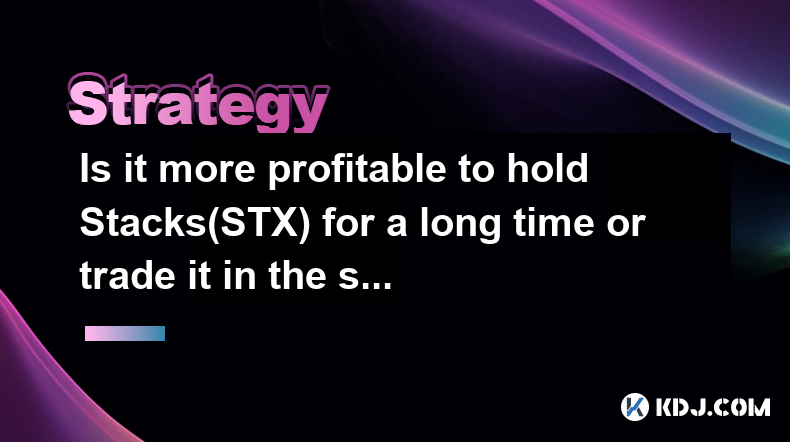
When considering whether to hold Stacks (STX) for a long time or engage in short-term trading, it's crucial to understand the different approaches and their potential impacts on profitability. The choice between long-term holding and short-term trading depends on various factors, including an investor's risk tolerance, investment goals, and market knowledge. In this article, we will explore both strategies in detail and discuss which might be more suitable for novices.
Understanding Stacks (STX)
Stacks (STX) is a cryptocurrency that enables smart contracts and decentralized applications on the Bitcoin blockchain. It aims to expand the functionality of Bitcoin by adding programmability without compromising its security and decentralization. As a result, STX has attracted attention from both Bitcoin enthusiasts and those interested in decentralized finance (DeFi).
Long-Term Holding of Stacks (STX)
Long-term holding, also known as "HODLing," involves purchasing STX and retaining it over an extended period, often years. This strategy is based on the belief that the value of STX will increase over time due to the project's development and broader adoption of its technology.
Advantages of Long-Term Holding:
- Reduced Stress and Time Commitment: Long-term holding requires less active management and can be less stressful than constantly monitoring the market.
- Potential for Significant Gains: If STX's underlying technology and adoption grow as expected, the value could increase substantially over time.
- Alignment with Fundamental Beliefs: Investors who believe in the long-term potential of Stacks and its role in enhancing Bitcoin's ecosystem may find this strategy appealing.
Disadvantages of Long-Term Holding:
- Opportunity Cost: By holding STX for a long time, investors might miss out on other investment opportunities that could offer higher returns.
- Market Volatility: The cryptocurrency market can be highly volatile, and long-term holders must be prepared for significant price fluctuations.
- Lack of Liquidity: Holding assets long-term can tie up capital that might be needed for other purposes.
Short-Term Trading of Stacks (STX)
Short-term trading involves buying and selling STX over shorter periods, often within days or weeks, to capitalize on price movements. This strategy requires a more active approach and a keen understanding of market trends and technical analysis.
Advantages of Short-Term Trading:
- Potential for Quick Profits: Traders can take advantage of short-term price movements to generate profits more quickly than long-term holders.
- Flexibility: Short-term trading allows investors to adapt to changing market conditions and capitalize on opportunities as they arise.
- Learning Opportunity: Engaging in short-term trading can help investors gain a deeper understanding of market dynamics and improve their trading skills.
Disadvantages of Short-Term Trading:
- Higher Risk: Short-term trading involves more risk due to the need to predict short-term price movements accurately.
- Increased Stress and Time Commitment: Active trading requires constant monitoring of the market, which can be stressful and time-consuming.
- Transaction Costs: Frequent buying and selling can lead to higher transaction fees, which can eat into profits.
Which Strategy is More Profitable?
Determining whether long-term holding or short-term trading is more profitable with Stacks (STX) depends on various factors, including market conditions, the investor's skill level, and the timing of their trades.
Market Conditions: The profitability of both strategies can be influenced by the overall market sentiment and the specific developments within the Stacks ecosystem. Bullish markets may favor both long-term holders and short-term traders, while bearish markets can be more challenging for both.
Investor's Skill Level: Experienced traders with a deep understanding of market analysis and technical indicators may find short-term trading more profitable. In contrast, novice investors might benefit more from the simplicity and potential long-term gains of holding STX.
Timing: The timing of entering and exiting positions can significantly impact profitability. Long-term holders need to be patient and believe in the project's long-term vision, while short-term traders must be adept at timing their trades to capitalize on short-term price movements.
Which Strategy is Suitable for Novices?
For novice investors, the choice between long-term holding and short-term trading of Stacks (STX) should be guided by their comfort level with risk and their willingness to learn and engage with the market.
Long-Term Holding for Novices:
- Simplicity: Long-term holding is a simpler strategy that requires less active management, making it more suitable for those new to cryptocurrency investing.
- Lower Risk: While still subject to market volatility, long-term holding generally involves less risk than short-term trading, as it does not require precise timing of market movements.
- Learning Curve: Novices can use the time they hold STX to learn more about the cryptocurrency market and the Stacks ecosystem, preparing them for more advanced strategies in the future.
Short-Term Trading for Novices:
- Higher Risk: Short-term trading can be challenging for novices due to the need for quick decision-making and a deep understanding of market trends.
- Educational Value: Engaging in short-term trading can provide valuable learning experiences, but it requires a willingness to accept potential losses as part of the learning process.
- Time and Effort: Novices considering short-term trading must be prepared to dedicate significant time and effort to learning and monitoring the market.
Practical Steps for Long-Term Holding of Stacks (STX)
If you decide that long-term holding is the right strategy for you, here are some practical steps to get started:
Research and Understand Stacks (STX): Before investing, take the time to understand the Stacks project, its goals, and its potential impact on the Bitcoin ecosystem. Read the official documentation, whitepapers, and follow updates from the Stacks team.
Choose a Secure Wallet: Select a reputable cryptocurrency wallet that supports STX. Options include hardware wallets like Ledger or software wallets like the Stacks Wallet. Ensure the wallet has strong security features to protect your investment.
Purchase STX: Use a trusted cryptocurrency exchange that lists STX, such as Coinbase or Binance, to buy the cryptocurrency. Follow these steps:
- Create an account on the exchange and complete the necessary verification processes.
- Deposit funds into your exchange account using a supported payment method.
- Navigate to the STX trading pair and place a buy order for the desired amount of STX.
- Once the purchase is complete, transfer your STX to your secure wallet for long-term storage.
Monitor and Stay Informed: While long-term holding requires less active management, it's still important to stay informed about developments in the Stacks ecosystem and broader cryptocurrency market. Join relevant communities, follow official channels, and periodically review your investment strategy.
Practical Steps for Short-Term Trading of Stacks (STX)
If you are interested in short-term trading of Stacks (STX), here are some practical steps to consider:
Educate Yourself: Before engaging in short-term trading, educate yourself on technical analysis, market indicators, and trading strategies. Resources such as online courses, books, and trading communities can be helpful.
Choose a Trading Platform: Select a cryptocurrency exchange that offers advanced trading features and supports STX. Popular options include Binance, Kraken, and Coinbase Pro. Ensure the platform has a user-friendly interface and low transaction fees.
Set Up Your Trading Account: Create an account on the chosen exchange and complete the necessary verification processes. Deposit funds into your account using a supported payment method.
Develop a Trading Plan: Establish a clear trading plan that outlines your entry and exit points, risk management strategies, and profit targets. Consider using stop-loss orders to limit potential losses.
Execute Trades: Monitor the STX market closely and execute trades based on your trading plan. Use the following steps:
- Analyze market trends and technical indicators to identify potential trading opportunities.
- Place buy orders when you believe the price of STX is likely to increase in the short term.
- Monitor your positions and be prepared to sell when your profit targets are reached or if the market moves against your position.
- Use stop-loss orders to automatically sell your STX if the price drops to a predetermined level, helping to limit potential losses.
Review and Adjust: Regularly review your trading performance and adjust your strategy as needed. Learn from both successful and unsuccessful trades to improve your skills over time.
Frequently Asked Questions
Q: Can I switch between long-term holding and short-term trading strategies with Stacks (STX)?
A: Yes, you can switch between strategies based on your investment goals and market conditions. However, it's important to consider the potential tax implications and transaction costs associated with frequent buying and selling.
Q: How can I stay updated on the latest developments in the Stacks ecosystem?
A: To stay informed, follow the official Stacks social media channels, join relevant online communities and forums, and subscribe to newsletters from reputable cryptocurrency news sources. Additionally, regularly check the Stacks website for updates and announcements.
Q: What are some common mistakes to avoid when trading Stacks (STX)?
A: Common mistakes include trading without a clear plan, ignoring risk management, letting emotions drive trading decisions, and failing to stay informed about market developments. Always approach trading with a disciplined and informed mindset.
Q: Are there any tools or resources that can help me with technical analysis for Stacks (STX)?
A: Yes, several tools and resources can assist with technical analysis, including trading platforms like TradingView, which offer charting and analysis tools, and websites like CoinMarketCap and CoinGecko, which provide market data and insights. Additionally, consider using technical analysis software and following experienced traders and analysts for guidance.
Disclaimer:info@kdj.com
The information provided is not trading advice. kdj.com does not assume any responsibility for any investments made based on the information provided in this article. Cryptocurrencies are highly volatile and it is highly recommended that you invest with caution after thorough research!
If you believe that the content used on this website infringes your copyright, please contact us immediately (info@kdj.com) and we will delete it promptly.
- Donald Trump, TRUMP Memecoin, and the Latest Move: A New York Perspective
- 2025-07-01 17:10:12
- Cardano, Solana, XRP: Navigating the Crypto Seas in Q3 2025
- 2025-07-01 16:30:12
- Bitcoin Holders and the Price Hold: What's the Deal?
- 2025-07-01 16:50:26
- ChatGPT, Crypto Trading, and a $100K Profit: AI's Edge in the Wild West
- 2025-07-01 16:30:12
- Mutuum Finance Presale vs. Dogecoin: A New Challenger Approaches?
- 2025-07-01 16:50:26
- Memecoins to Buy in July 2025: Riding the Hype Wave
- 2025-07-01 17:10:12
Related knowledge
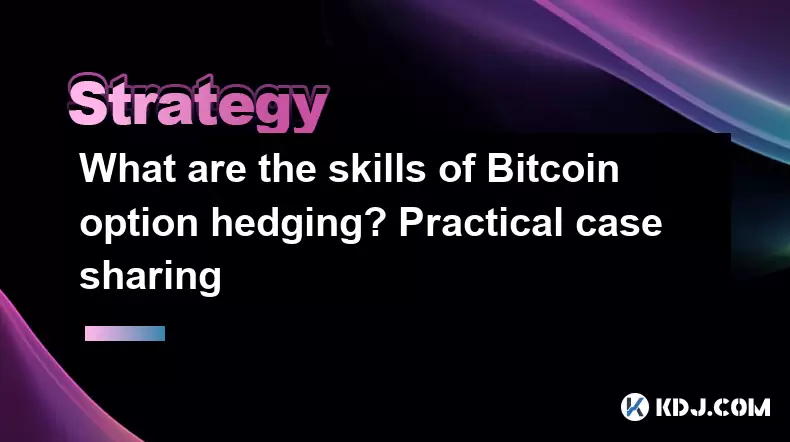
What are the skills of Bitcoin option hedging? Practical case sharing
Jun 24,2025 at 04:01pm
Understanding Bitcoin Option HedgingBitcoin option hedging is a risk management strategy used by traders and investors to protect their positions in the volatile cryptocurrency market. By using options, individuals can limit potential losses while retaining the opportunity for profit. In essence, it allows one to insulate against adverse price movements...
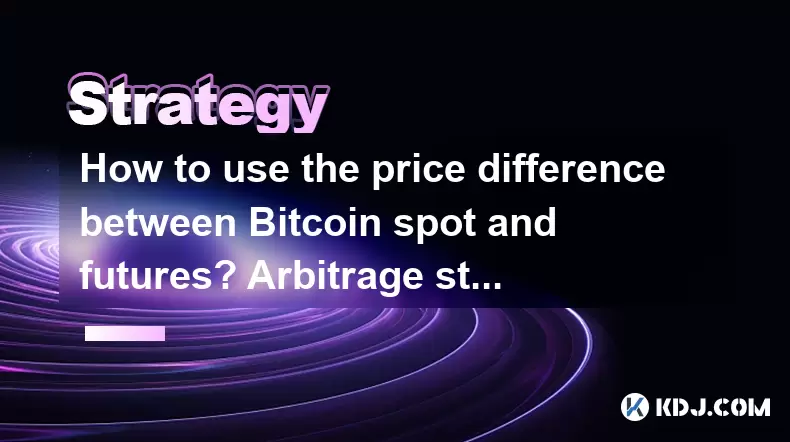
How to use the price difference between Bitcoin spot and futures? Arbitrage strategy
Jun 20,2025 at 02:56pm
Understanding Bitcoin Spot and Futures MarketsTo effectively leverage arbitrage opportunities between Bitcoin spot and futures markets, it's essential to understand the fundamental differences between these two types of markets. The spot market refers to the direct buying and selling of Bitcoin for immediate delivery at the current market price. In cont...

How to increase DeFi lending income? Strategy and risk analysis
Jun 24,2025 at 02:08pm
Understanding DeFi Lending and Its Income PotentialDeFi (Decentralized Finance) lending has emerged as a popular way to earn passive income in the cryptocurrency space. Unlike traditional banking systems, DeFi lending platforms allow users to lend their crypto assets directly to borrowers without intermediaries. The lenders earn interest based on the su...
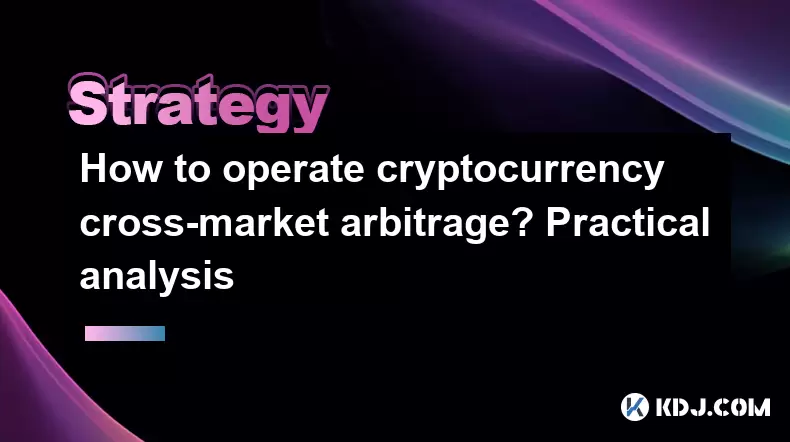
How to operate cryptocurrency cross-market arbitrage? Practical analysis
Jun 23,2025 at 04:01am
Understanding Cryptocurrency Cross-Market ArbitrageCryptocurrency cross-market arbitrage involves taking advantage of price differences for the same digital asset across different exchanges. The core idea is to buy low on one exchange and sell high on another, capturing the profit from the discrepancy. This strategy relies heavily on real-time market da...

How to make profits from high-frequency cryptocurrency trading? Sharing core skills
Jun 19,2025 at 05:07pm
Understanding High-Frequency Cryptocurrency TradingHigh-frequency trading (HFT) in the cryptocurrency market involves executing a large number of trades at extremely fast speeds, often within milliseconds. This method relies on small price discrepancies across exchanges or within a single exchange’s order book. Traders use complex algorithms and ultra-l...
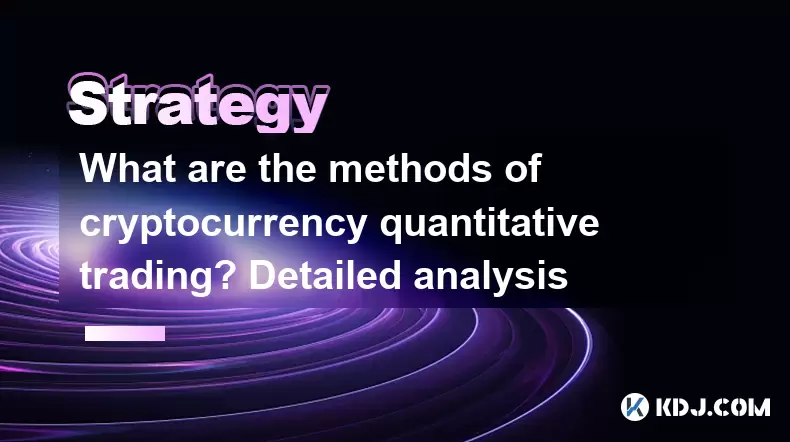
What are the methods of cryptocurrency quantitative trading? Detailed analysis
Jun 22,2025 at 11:07pm
Understanding the Core of Cryptocurrency Quantitative TradingCryptocurrency quantitative trading refers to the use of mathematical models and algorithms to execute trades in the digital asset market. Unlike traditional discretionary trading, which relies heavily on human judgment, quantitative trading leverages data-driven strategies to identify profita...

What are the skills of Bitcoin option hedging? Practical case sharing
Jun 24,2025 at 04:01pm
Understanding Bitcoin Option HedgingBitcoin option hedging is a risk management strategy used by traders and investors to protect their positions in the volatile cryptocurrency market. By using options, individuals can limit potential losses while retaining the opportunity for profit. In essence, it allows one to insulate against adverse price movements...

How to use the price difference between Bitcoin spot and futures? Arbitrage strategy
Jun 20,2025 at 02:56pm
Understanding Bitcoin Spot and Futures MarketsTo effectively leverage arbitrage opportunities between Bitcoin spot and futures markets, it's essential to understand the fundamental differences between these two types of markets. The spot market refers to the direct buying and selling of Bitcoin for immediate delivery at the current market price. In cont...

How to increase DeFi lending income? Strategy and risk analysis
Jun 24,2025 at 02:08pm
Understanding DeFi Lending and Its Income PotentialDeFi (Decentralized Finance) lending has emerged as a popular way to earn passive income in the cryptocurrency space. Unlike traditional banking systems, DeFi lending platforms allow users to lend their crypto assets directly to borrowers without intermediaries. The lenders earn interest based on the su...

How to operate cryptocurrency cross-market arbitrage? Practical analysis
Jun 23,2025 at 04:01am
Understanding Cryptocurrency Cross-Market ArbitrageCryptocurrency cross-market arbitrage involves taking advantage of price differences for the same digital asset across different exchanges. The core idea is to buy low on one exchange and sell high on another, capturing the profit from the discrepancy. This strategy relies heavily on real-time market da...

How to make profits from high-frequency cryptocurrency trading? Sharing core skills
Jun 19,2025 at 05:07pm
Understanding High-Frequency Cryptocurrency TradingHigh-frequency trading (HFT) in the cryptocurrency market involves executing a large number of trades at extremely fast speeds, often within milliseconds. This method relies on small price discrepancies across exchanges or within a single exchange’s order book. Traders use complex algorithms and ultra-l...

What are the methods of cryptocurrency quantitative trading? Detailed analysis
Jun 22,2025 at 11:07pm
Understanding the Core of Cryptocurrency Quantitative TradingCryptocurrency quantitative trading refers to the use of mathematical models and algorithms to execute trades in the digital asset market. Unlike traditional discretionary trading, which relies heavily on human judgment, quantitative trading leverages data-driven strategies to identify profita...
See all articles

























































































